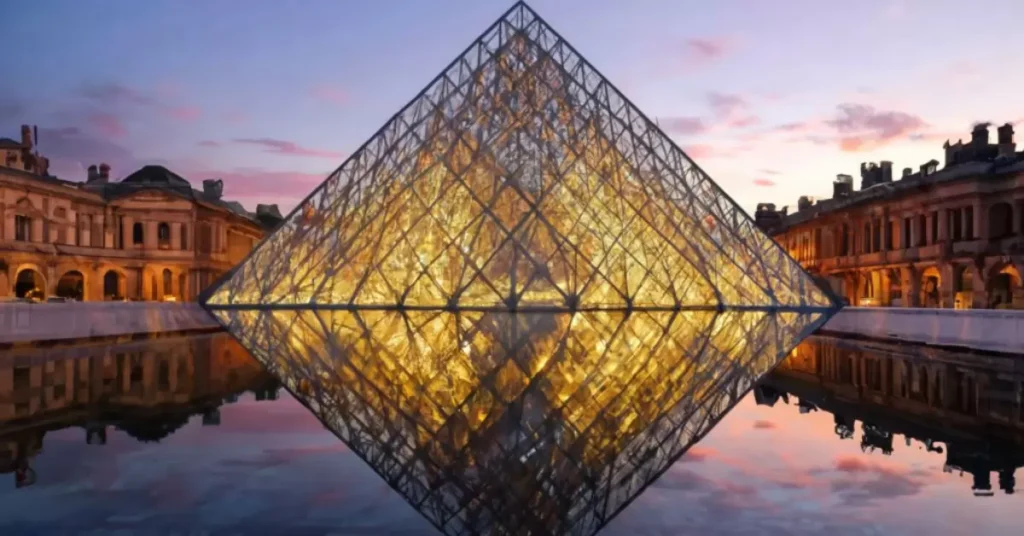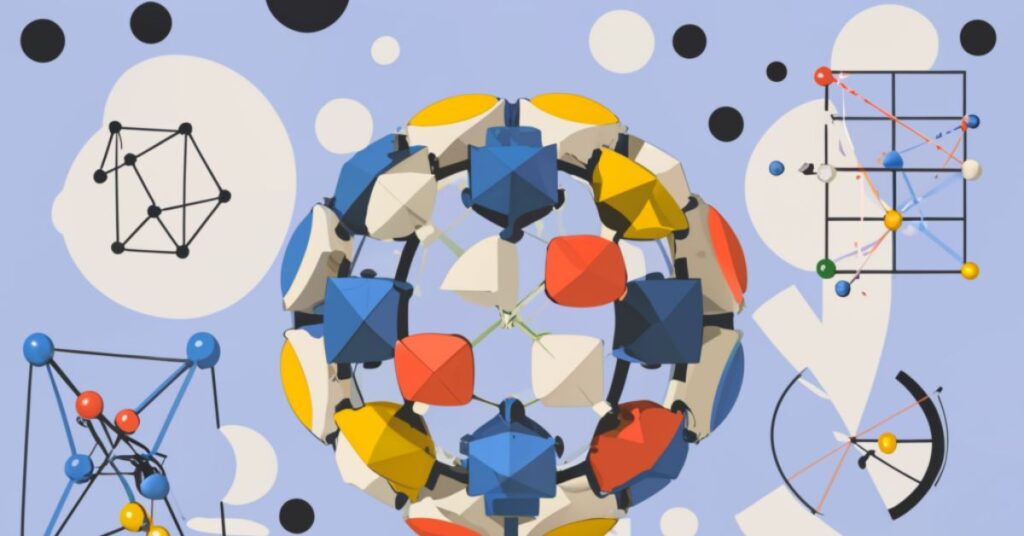Geometry is one of the oldest branches of mathematics, a field that has fascinated scholars, artists, and scientists for millennia. From ancient civilizations like the Egyptians and Greeks to modern-day applications in technology and science, geometry is a foundational aspect of human understanding. In this blog post, we’ll explore the origins, key concepts, roles in art and architecture, applications in science and technology, educational importance, and future perspectives of geometry. We’ll also discuss the concept of a “Geometry Spot” as a hub for learning and exploration.
The Origins of Geometry
Geometry has ancient roots, tracing back to early civilizations. The word “geometry” is derived from the Greek words “geo” (meaning earth) and “metron” (meaning measure). Early civilizations used geometric principles to solve practical problems, such as land measurement, construction, and astronomy.
Egyptian Contributions
The Egyptians made significant contributions to geometry. Their use of geometry in constructing the pyramids and other monumental structures is well-documented. They developed techniques for measuring land areas, which were essential for agriculture and property division after the annual flooding of the Nile River.
- Land Measurement: Egyptians used a system of ropes and stakes to measure plots of land, a practice that laid the foundation for geometric surveying.
- Pyramid Construction: The precise angles and alignments of the pyramids showcase their advanced understanding of geometric principles.
Greek Contributions
The Greeks took geometry to a new level, transforming it into a formalized branch of mathematics. Figures like Euclid, Pythagoras, and Archimedes made lasting contributions to the field.
- Euclid’s “Elements”: This seminal work laid down the foundations of what is now known as Euclidean geometry. It consists of 13 books covering a vast array of geometric principles.
- Pythagorean Theorem: Pythagoras’ work on right triangles remains a cornerstone of geometry, influencing countless applications in various fields.
- Archimedes’ Work: Known for his work on the geometry of spheres, cylinders, and parabolas, Archimedes’ contributions extend to both theoretical and practical applications.
Key Concepts in Geometry
Geometry is a vast field with numerous concepts and subfields. Understanding these key concepts is essential for appreciating the depth and breadth of geometry.
Points, Lines, and Planes
These are the basic building blocks of geometry.
- Points: Represent a specific location in space with no dimensions.
- Lines: One-dimensional figures that extend infinitely in both directions.
- Planes: Flat, two-dimensional surfaces that extend infinitely.
Angles and Triangles
Angles and triangles are fundamental in both Euclidean and non-Euclidean geometry.
- Angles: Formed when two lines intersect, measured in degrees.
- Triangles: Three-sided polygons, with various types such as equilateral, isosceles, and scalene. The Pythagorean theorem is central to the study of right triangles.
Polygons and Circles
Polygons are multi-sided figures, and circles are defined as a set of points equidistant from a central point.
- Polygons: Include shapes like squares, rectangles, pentagons, and hexagons.
- Circles: Central to both Euclidean and non-Euclidean geometries, with properties such as radius, diameter, and circumference.
- Related Blog” Fappelo: Guide to the Brand and Its Offerings
Solid Geometry
Solid geometry deals with three-dimensional figures such as cubes, spheres, and pyramids.
- Volume: The amount of space occupied by a solid.
- Surface Area: The total area covered by the surface of a solid.
| Shape | Volume Formula | Surface Area Formula |
| Cube | V=s3V = s^3V=s3 | SA=6s2SA = 6s^2SA=6s2 |
| Sphere | V=43πr3V = \frac{4}{3}\pi r^3V=34πr3 | SA=4πr2SA = 4\pi r^2SA=4πr2 |
| Cylinder | V=πr2hV = \pi r^2 hV=πr2h | SA=2πr(h+r)SA = 2\pi r(h + r)SA=2πr(h+r) |
| Pyramid | V=13BhV = \frac{1}{3}BhV=31Bh | SA=B+12PlSA = B + \frac{1}{2}PlSA=B+21Pl |
The Role of Geometry in Art and Architecture

Geometry has always been intertwined with art and architecture, guiding principles such as symmetry, proportion, and perspective.
Islamic Art
Islamic art is renowned for its intricate geometric patterns, which are not merely decorative but also hold spiritual and philosophical significance.
- Tessellations: Repeating geometric patterns that cover a surface without gaps or overlaps.
- Symmetry: Often used to represent the infinite nature of Allah in Islamic culture.
Renaissance Art
During the Renaissance, artists like Leonardo da Vinci and Michelangelo applied geometric principles to achieve realistic proportions and perspectives.
- Golden Ratio: A mathematical ratio often found in nature, art, and architecture, used to create aesthetically pleasing compositions.
- Perspective: Techniques such as linear perspective, which uses geometry to create the illusion of depth on a flat surface.
Modern Architecture
Modern architecture continues to utilize geometric shapes and forms, often incorporating advanced concepts such as fractals and topology.
- Fractals: Complex geometric shapes that can be split into parts, each of which is a reduced-scale copy of the whole.
- Topology: The study of properties that are preserved under continuous deformations, applied in urban planning and architectural design.
Applications of Geometry in Science and Technology
Geometry plays a crucial role in various scientific and technological fields, from astronomy to computer graphics.
Astronomy
For centuries, geometry has been used to map the stars, calculate distances between celestial bodies, and understand the structure of the universe.
- Kepler’s Laws: Johannes Kepler used geometric models to describe the motion of planets, laying the groundwork for celestial mechanics.
- Spacetime Geometry: In Einstein’s theory of general relativity, gravity is described as the curvature of spacetime, a concept rooted in non-Euclidean geometry.
Physics
Geometry is fundamental in physics, particularly in understanding the shape and behavior of objects in space.
- Einstein’s Relativity: The theory of relativity revolutionized our understanding of space and time, using non-Euclidean geometry to describe the fabric of the universe.
- Quantum Geometry: Explores the geometric properties of space at the quantum level, potentially offering new insights into the fundamental nature of the universe.
Computer Graphics
In the digital age, geometry is essential for computer graphics, animation, and game design.
- 3D Modeling: Algorithms that render 3D objects on screens rely heavily on geometric principles to create realistic images.
- Virtual Reality (VR) and Augmented Reality (AR): Geometry plays a key role in creating immersive experiences by accurately modeling the virtual environment.
Robotics and Engineering
In robotics and engineering, geometry is crucial for designing and analyzing mechanical systems.
- Kinematics: The study of motion without considering forces, heavily reliant on geometric analysis.
- Structural Optimization: Using geometric principles to design structures that are both strong and efficient.
- Related Blog” The Internet Chicks
The Educational Importance of Geometry

Geometry is a core subject in mathematics education, and its importance extends beyond the classroom.
Visual Learning
Geometry often involves visual learning, where students work with diagrams, models, and other visual aids.
Interactive Tools: Modern educational technology provides tools that make geometric concepts more accessible and engaging.
Logical Reasoning
Studying geometric proofs helps students develop logical reasoning and problem-solving skills.
Proofs and Theorems: Learning to derive conclusions from given premises fosters analytical thinking.
Real-World Applications
Teaching geometry with real-world applications makes the subject more engaging and relevant to students.
Architecture and Design: Applying geometric principles to real-world problems helps students see the practical value of what they learn.
The Future of Geometry: A Modern Perspective
As we move further into the 21st century, geometry continues to evolve, with new discoveries and applications emerging.
Computational Geometry
This branch of geometry deals with algorithms and their implementation in computer systems.
Applications: Used in areas such as robotics, computer-aided design, and geographic information systems (GIS).
Quantum Geometry
In the realm of theoretical physics, quantum geometry explores the geometric properties of space at the quantum level.
Insights: Could provide new insights into the fundamental nature of the universe, potentially leading to breakthroughs in physics.
Educational Technology
The rise of educational technology has led to the development of interactive tools that make learning geometry more accessible.
Virtual and Augmented Reality: These technologies are used to create immersive learning experiences, allowing students to explore geometric concepts in a three-dimensional space.
Geometry Spot: A Hub for Learning and Exploration
Given the vastness of the field, a “Geometry Spot” could serve as a dedicated space for learning, exploring, and discussing all things geometry.
Online Platforms
An online Geometry Spot could include interactive lessons, problem-solving challenges, and forums for discussion.
Resources: Offer lesson plans, worksheets, and assessment tools for teachers.
Community: Build a community of learners and educators who share a passion for geometry.
Workshops and Seminars
A physical Geometry Spot could host workshops, seminars, and exhibitions on various topics related to geometry. Events: Cater to different age groups and skill levels, from beginners to advanced learners.
Research and Collaboration
For professionals and researchers, a Geometry Spot could serve as a hub for collaboration and innovation. Interdisciplinary Research: Facilitate the sharing of ideas, tools, and techniques, and foster interdisciplinary research.
Conclusion
Geometry is a field with a rich history and a wide range of applications, from ancient architecture to modern technology. A “Geometry Spot” could be a place where people come together to learn, explore, and celebrate this fascinating branch of mathematics. Whether through online resources, educational workshops, or collaborative research, a Geometry Spot would serve as a focal point for anyone interested in the world of geometry. As we continue to advance in science and technology, the importance of geometry will only grow, making it an essential field for future generations to study and appreciate.
Hey, Molar is the voice behind this all-encompassing blog, sharing expert insights and practical advice on business, real estate, and more. Dedicated to helping you navigate the complexities of these fields, Kelly provides the latest trends, in-depth analyses, and creative strategies to elevate your ventures.
